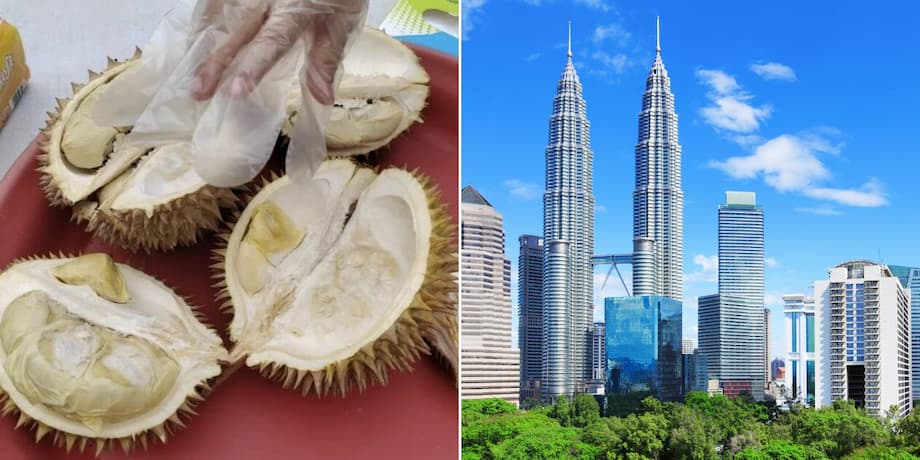A viral time travel claim sparks a wider debate
A Chinese traveler set off a lively discussion across social platforms after describing Malaysia as feeling like China two decades ago. The post, written on Xiaohongshu, highlighted older looking cars on the streets, very few electric vehicles, and everyday costs that felt friendlier than at home. The choice of the word retro struck a chord. Some readers embraced it as a compliment. Others saw it as a critique of development. Either way, the comment captured a real on the ground contrast that many visitors notice when they arrive from the fast changing megacities of China.
- A viral time travel claim sparks a wider debate
- What the traveler noticed on the ground
- Is Malaysia really cheaper for Chinese visitors
- Why Malaysia is trending with Chinese travelers
- The retro vibe, challenge or charm for visitors
- Not every trip goes smoothly
- Cars, EVs and what visitors see on the roads
- What tourism stakeholders can do now
- Key Points
Chinese travelers are again fanning out across Southeast Asia in large numbers, and Malaysia has become a top draw. Visa free entry for short stays, additional flights, and perceptions of safety have helped steer demand. Social media plays a major role too. A steady stream of food videos, cafe finds, and travel tips has made Kuala Lumpur, Penang, Melaka, and Sabah familiar names for first timers planning a regional trip.
The viral post goes beyond a single opinion. It opens a window on what Chinese visitors now value. Price is one part. So is convenience, such as mobile payments and clear transit information. Culture and food matter as well, from night markets to coffee traditions. The retro label, depending on where you stand, can mean slower pace, vintage charm, or lagging tech. That is why the reaction has been so strong.
What the traveler noticed on the ground
In the Xiaohongshu post, the visitor wrote that most cars seen around town were Japanese makes, with few electric vehicles in sight. That stood out to someone used to streets in Shenzhen, Shanghai, or Guangzhou where battery powered cars and taxis are common. Billboards for Chinese tech brands like Huawei and Xiaomi were familiar, yet the roads felt like a different era. Prices also felt lighter. The traveler estimated that gasoline, food, and lodging were roughly a third cheaper than at home. The stay included durian by the roadside with other Chinese travelers, an experience that felt both spontaneous and easy on the wallet.
The traveler wrote that being in Malaysia felt like traveling through time. It looked very retro, like China from 20 years ago, and everyday costs were lower.
For many Chinese visitors, the car scene is the most visible signal of difference. China has become the global leader in electric vehicle sales, and major cities have rapidly filled with compact EVs and electric buses. Malaysia has seen growth in EV interest, new charging points, and headline launches, yet the fleet on the road still leans heavily toward petrol models. That gap alone can make a city in Malaysia feel older to a newcomer from China, even when skyscrapers and malls look fully modern.
Is Malaysia really cheaper for Chinese visitors
For now, many travelers from China do find Malaysia easier on the pocket. Two forces shape that view. The first is currency. The Malaysian ringgit has been relatively weak against the yuan in recent years, which stretches a visitor budget. The second is policy. Malaysia subsidizes basic fuels for residents, and that helps anchor transport and logistics costs for goods and services. Imported items can still feel expensive, yet daily needs like local meals, ride hailing within a city, and mid range hotels often compare well with large Chinese cities.
Food, markets and the price of a good night out
Malaysian food culture is a draw in its own right. Night markets in Kuala Lumpur, Penang, Malacca, and Kota Kinabalu offer hawker classics that mix Malay, Chinese, Indian, and Southeast Asian flavors. Visitors can eat well without spending much. Spots like Jalan Alor in Kuala Lumpur or Kimberley Street in George Town remain lively until late, with snacks, fruit, noodles, and grills that appeal to families and groups of friends. For many Chinese travelers, the mix of quality and affordability is a relief after rising restaurant prices at home.
Fashion and lifestyle shopping vary by city, but the region trend favors value buys off the main tourist streets. Across Southeast Asia, travelers are discovering small boutiques, second hand stores, and creative brands in older buildings. This shift mirrors the search for experiences rather than pure luxury splurges. Malaysia fits well in that lane, especially in historic districts where cafes, art spaces, and independent shops cluster in walkable blocks.
Why Malaysia is trending with Chinese travelers
Policy and access set the stage. Short term visa exemptions for Chinese citizens, together with more direct flights from second tier Chinese cities, cut friction. Families and multigenerational groups are flying in for extended weekends, then adding days in Penang or Malacca. Safety perceptions play a part. Travelers compare destinations on personal security, scams, and the ease of moving around. Malaysia has benefited from word of mouth stories that signal comfort for first time visitors.
From big tour buses to free and easy plans
Travel habits are changing. Large bus groups are giving way to smaller friend circles and families planning their own schedules. Chinese travelers are spreading beyond must see landmarks into neighborhoods, beaches, nature parks, and food centric experiences. That pattern, seen across the region, raises the bar for clear wayfinding, reliable city transport, and simple digital tools. It also makes local cafes, markets, and museums even more important, since these are the places that bring a destination to life without a guide shouting into a microphone.
Payments and convenience
Another big factor is how easy it is to pay. Mobile wallets from China have grown fast outside the mainland. Many merchants in Malaysia that serve tourists accept QR code payments alongside cards and cash. That familiarity reduces stress on arrival, especially for travelers who would rather not swap currency at the airport. Ride hailing, food delivery, and ticketing apps also smooth a trip when language is a barrier.
The hotel scene is expanding to meet demand. New luxury properties in Kuala Lumpur and resort areas are joining a landscape of business hotels, boutique stays in heritage buildings, and family friendly apartments. High profile openings in the capital, including a Park Hyatt planned in the upper floors of Merdeka 118, point to confidence in premium travel to Malaysia in the years ahead.
The retro vibe, challenge or charm for visitors
It helps to parse what retro can mean in this context. To a traveler from a Chinese city where digital kiosks, ubiquitous EVs, and near cashless daily life are normal, a Malaysian city with more petrol sedans, printed menus, and human ticket counters can feel like a step back in time. That perception does not cancel out the presence of modern malls, highways, or a strong mobile network. It is a snapshot of street level life, and it varies within Malaysia from neighborhood to neighborhood.
For many visitors, that texture is part of the appeal. Historic shop houses with creaking floorboards, neon lit coffee shops, and vintage themed cafes give a sense of place. Melaka in particular has embraced a classic look across a cluster of cafes and dessert spots where retro decor, enamel cups, and old school pastries set the mood. Coffee culture is thriving across the country, from the oldest coffee mill in Taiping to modern specialty bars in Ipoh, Johor, and Kota Kinabalu. These experiences align with the new travel playbook, which values character over checklist tourism.
Where nostalgia meets curation
- Night markets that mix Malay, Chinese, and Indian street food with fruit stalls and local sweets
- Vintage styled cafes in Melaka that serve coffee from all 13 Malaysian states, pandan pancakes with gula melaka, and traditional snacks
- Coffee heritage routes that include old mills, train station coffee houses, and small plantations open to visitors
- Historic neighborhoods in Penang and Kuala Lumpur where galleries, tailors, and indie brands share space in restored buildings
When these scenes are presented with clear signs, fair prices, and friendly service, retro shifts from critique to charm. Visitors leave with stories, not just photos.
Not every trip goes smoothly
Not all Chinese travelers have had glowing experiences. A recurring complaint is language on transport networks. One visitor described confusion at Kuala Lumpur International Airport when taking the train into the city. The non stop express service to KL Sentral is modern and fast but costs more than the commuter option, and signage in Chinese can be limited. Arriving late at night or during a busy holiday can amplify that stress. Others have voiced concerns about road safety, especially as pedestrians near busy junctions, and some women reported uncomfortable interactions with men in crowded areas.
These problems do not define Malaysia, and many visitors report smooth trips. They do point to practical improvements that can raise satisfaction. Clearer multilingual signs on rail lines and at airports, easy to spot help desks, and basic Chinese language support at key entry points would address common pain points. Better outreach on taxi and ride hailing safety, plus simple maps that explain rail choices and typical fares, would help first timers pick the right option.
Quick tips for a better first visit
- Download a translation app that works offline and a local map with rail lines and stations marked
- Use official ride hailing apps from the airport and confirm the fare before boarding
- Check hotel location against rail and bus lines to reduce transfer costs
- Save the airport rail website and a fare guide to compare the express and commuter options
- Carry a small amount of cash for markets that do not take cards or QR payments
- Dress modestly in rural or conservative areas and travel with friends at night in unfamiliar neighborhoods
Cars, EVs and what visitors see on the roads
China has spent years building an ecosystem for electric vehicles, from domestic manufacturing champions to dense charging networks in cities. That effort has changed what a typical street looks and sounds like. By contrast, Malaysia is still early in its EV journey. Charging infrastructure is expanding in Kuala Lumpur, Selangor, and Penang, and new models are arriving in showrooms, yet EVs remain a small share of cars in use. Price, taxes, and consumer habits keep most buyers in petrol powered Perodua, Proton, and Japanese models.
Age of the vehicle fleet matters. Many Malaysian cars stay on the road for a long time, supported by widely available service centers and parts. For a traveler used to the rapid replacement cycle in Chinese cities, older sedans and compact cars signal a different economic rhythm. That look, combined with lower traffic shares for EVs and scooters, feeds the retro impression even in areas with gleaming towers.
The gap is narrowing. New charging corridors across highways and premium malls have added convenience. Hotel groups and office towers in central Kuala Lumpur are installing chargers to attract business travelers. Visitors who return over the next few years will likely see more EVs on the road, along with clearer signage for charging spots around city centers.
What tourism stakeholders can do now
Malaysia has a strong story to tell. The country blends modern infrastructure with living heritage, and it offers high value food and lodging for regional travelers. The viral retro remark shows how a few practical steps could convert first impressions into repeat visits and positive reviews.
- Upgrade signage at airports, rail stations, and city interchanges to include Chinese, especially where two rail options serve the same corridor
- Deploy help desks at key touch points with staff trained to answer common questions in Mandarin during peak hours
- Standardize and publicize typical fares for airport rail and taxis to prevent confusion
- Expand acceptance of popular Chinese mobile wallets among small merchants in tourist zones to match larger retailers
- Publish simple neighborhood guides that highlight night markets, heritage cafes, and local crafts, both online and in hotel lobbies
- Work with city councils to improve pedestrian crossings and lighting near major attractions to address safety concerns
- Create packages that connect heritage coffee stops, vintage themed cafes, and market walks to turn nostalgia into a curated experience
Key Points
- A viral Xiaohongshu post called Malaysia very retro and cheaper than China, sparking debate about development and charm
- The traveler cited older looking cars, few EVs, and lower daily costs, plus easy access to durian as highlights
- Malaysia is drawing strong interest from Chinese visitors thanks to visa waivers, more flights, and comfort with mobile payments
- Food culture, night markets, and vintage styled cafes in cities like Kuala Lumpur, Penang, and Melaka align with experience led travel
- Language and wayfinding at airports and on rail lines can frustrate first timers, with calls for clearer Chinese signage
- EV adoption in Malaysia is growing from a small base, making streets feel different to visitors from Chinese cities
- A weaker ringgit and fuel policies help keep many costs lower for tourists compared with major Chinese cities
- Stakeholders can boost satisfaction with better signage, staff language support, payment options, and curated heritage routes




